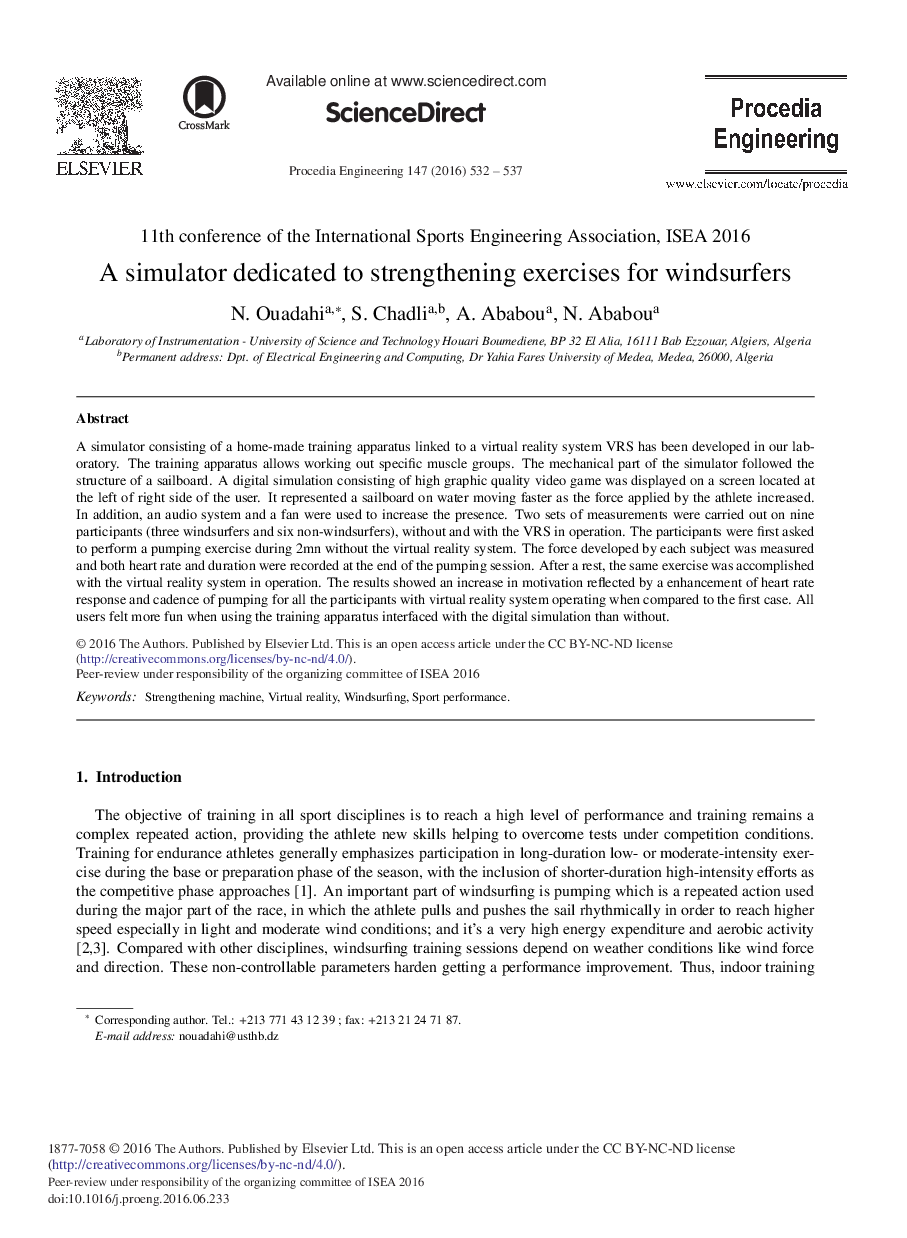| Article ID | Journal | Published Year | Pages | File Type |
|---|---|---|---|---|
| 853437 | Procedia Engineering | 2016 | 6 Pages |
Abstract
A simulator consisting of a home-made training apparatus linked to a virtual reality system VRS has been developed in our laboratory. The training apparatus allows working out specific muscle groups. The mechanical part of the simulator followed the structure of a sailboard. A digital simulation consisting of high graphic quality video game was displayed on a screen located at the left of right side of the user. It represented a sailboard on water moving faster as the force applied by the athlete increased. In addition, an audio system and a fan were used to increase the presence. Two sets of measurements were carried out on nine participants (three windsurfers and six non-windsurfers), without and with the VRS in operation. The participants were first asked to perform a pumping exercise during 2mn without the virtual reality system. The force developed by each subject was measured and both heart rate and duration were recorded at the end of the pumping session. After a rest, the same exercise was accomplished with the virtual reality system in operation. The results showed an increase in motivation reflected by a enhancement of heart rate response and cadence of pumping for all the participants with virtual reality system operating when compared to the first case. All users felt more fun when using the training apparatus interfaced with the digital simulation than without.
Keywords
Related Topics
Physical Sciences and Engineering
Engineering
Engineering (General)
Authors
N. Ouadahi, S. Chadli, A. Ababou, N. Ababou,
